Safety at home has become easier with the help of smart technology. In this guide, we will see how to set up everything that is needed to have a smart home security system step by step. Be it the cameras or the sensors, the user needs to learn how to protect your family and at the same time enjoy the modern, connected security of the day.
Can you ever imagine controlling your home’s security from your mobile phone in any part of the world? Still nescient with no worry left, I find it absolutely enviable to play the part of the guy who has an excellent device. From simple to advanced, you can craft your smart, secure, and convenient shelter will all the steps provided.
Join us as we take you on a journey to set up a complete smart home security system with ease. Identifying and purchasing what you need is not the first thing to check off because they must be properly integrated to work. In the end, you, too, can enjoy having a perfectly secure, connected home.
What is Smart Security?
Smart security means the concept of safety at the highest level, with such devices as cameras, alarms, and sensors being connected to smart systems. Tools like these, which can send instant notifications, allow people to watch their homes using apps and voice commands.
A smart security system will watch your property from a distance and make it possible to improve safety easily. This is a great solution, and it is both reliable and can be adjusted to meet the needs of modern lifestyles.
Why Choose a Smart Home Security System?
Smart home security systems combine advanced technology with the comfort of use, which makes them the best option for households. The main advantages of such systems are:
- 24/7 Monitoring: Never leave home, yet always be close to the home, regardless of where it is located.
- Customizable Alerts: Get notifications in real time to be vigilant about the potential risks.
- Integration: You can now link up with other gadgets seamlessly.
- Remote Control: Get every gadget under proper management by simply using your smartphone or tablet.
Smart Home Security Systems: What & How it Works?
Smart security systems are the super upfront configurations equipped to save your living space via high-tech functionality. That can be devices such as cameras, motion sensors, and some other devices (if you connect them to using your smartphone). Control at any time remotely or via your mobile device, receive alerts in case of an emergency situation, and even forward video to the security company, that’s all you can do thanks to smart security systems.
These schemes function by linking diverse components via a core hub or an app. The present-day smart home security systems allow you to go through an effortless way of safeguarding your property with the help of convenience and security for the family.
Types of IoT-Based Home Security Systems
IoT-based home security systems incorporate biometric systems, video doorbells, smart cameras, smoke sensors, and motion sensors for a better sense of security.
a. Biometric Systems
Biometrics are the technology that uses the physical features of a person, like fingerprints or face recognition, to let them into the place. While on the one hand, they guarantee safety, on the other hand, they remove the need for keys or codes as the entry is done by scanning the person’s body parts, thus reducing the possibility of unauthorized entry.
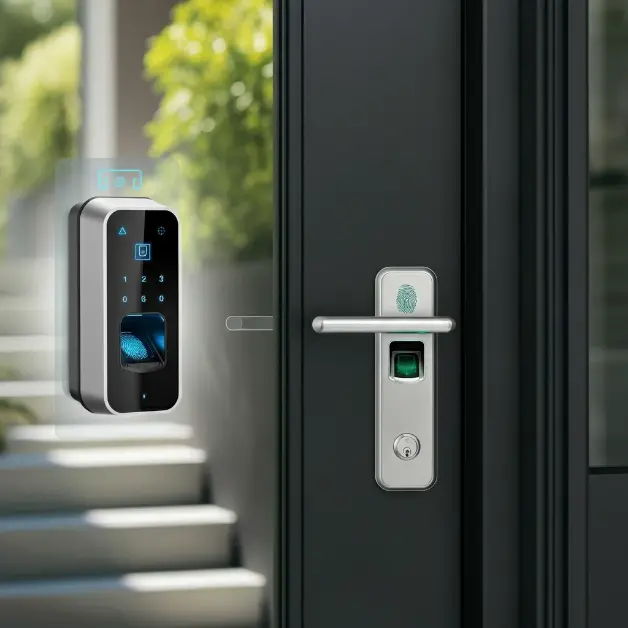
b. Video Doorbell
Video doorbell allows you to virtually communicate with your visitors via the mobile application and never to be at home, even if they are waiting at the front door. By taking advantage of the two-way communication feature, when you are not available at home, you can still monitor video clearness and motion alerts that will be provided through these free apps along with video recording.
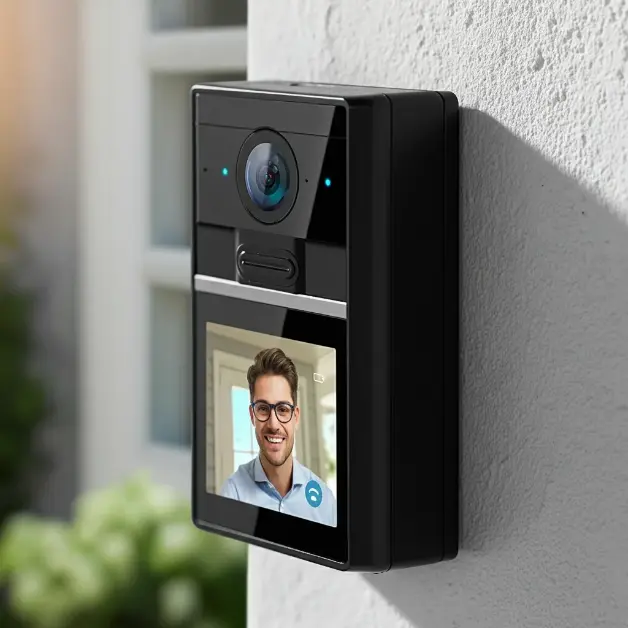
c. Smart Camera
Constantly innovative smart cameras permit uninterrupted video surveillance of your home with easy access through cloud storage. Hence, you can use these cameras on your mobile app for the following live streams, playback, and observing the whole home even far away.

d. Smoke Sensors
Smoke sensors can tell the smoke is floating and will alert your smartphone or other smart devices immediately. The most indispensable part of your home security system is the smoke alarms that function as the first sign of a fire. Thus, the hazards could be reduced by people’s awareness and proper safety
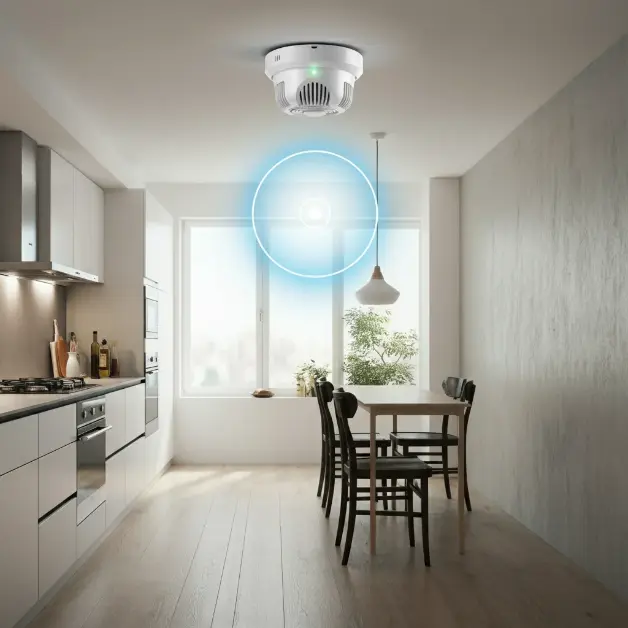
e. Motion Sensors
The system is activated when any movement is signalled by the motion sensors. Sometimes, other security features are used in combination with motion sensors, so they can also identify potential intruders and alert you to suspicious activity and, hence, provide more level of safety.
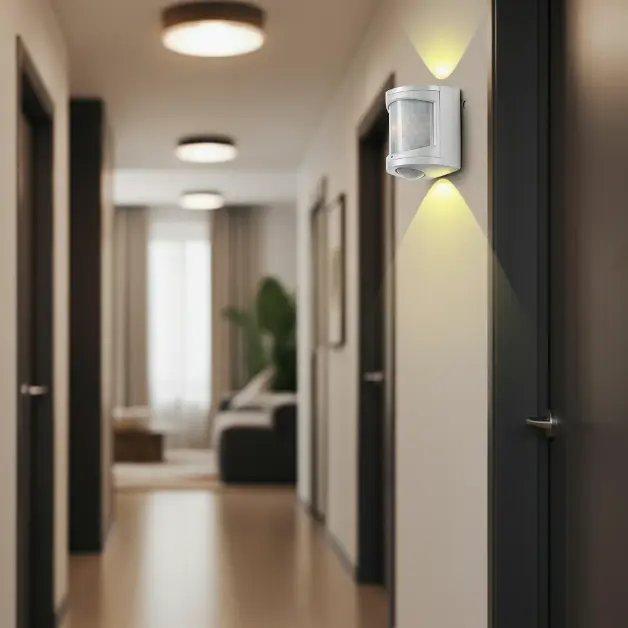
Benefits of Using Smart Home Security Systems
One of the best features of smart home security systems is that they give real-time alerts, remote access, and are automated, which really is an amazing and very undemanding job that in essence, is a fantastic well-being service for people to use.
1. Real-time Alerts
Smart home security systems can even send you alert messages that can tell you in real-time whether there is suspicious activity at your home or not. For example, the camera can feel motion, or the person at the door can be seen. Thus, the homeowner will surely receive a notification. Real-time alerts are the first step in home security. Thus, a homeowner can deal with any possible danger, further enhancing safety while absent.
2. Remote Access
Smart home security systems being modernized are way much easier to be checked and monitored on the spot. Remote access enables you to access the live video feed and lock or unlock the doors with your smartphone or tablet, regardless of your location. This will allow you to have a sense of tranquility helped by the possibility of regulating the home security system.
3. Automation
Using smart home security systems enables you to automate several security tasks like setting an alarm, turning on the lights, or closing the doors. Home automation guarantees you a secure home all day long, whether you are away or not. To be precise, it is a technique used by homeowners to regulate lights on at the same intervals every day so that it appears as if someone is at home thus shrinking their mind of an intrusion.
4. Cost-effective
Using smart home security systems enables you to automate several security tasks like setting an alarm, turning on the lights, or closing the doors. Home automation guarantees you a secure home all day long, whether you are away or not. To be precise, it is a technique used by homeowners to regulate lights on at the same intervals every day so that it appears as if someone is at home thus shrinking their mind of an intrusion.
Top Must-Have Features of Smart Home Security Systems
The most basic elements that should not be missed in any smart home security system are monitoring energy consumption, connecting with other appliances, detecting smoke, and detecting motion; also, an alert is sent almost immediately.
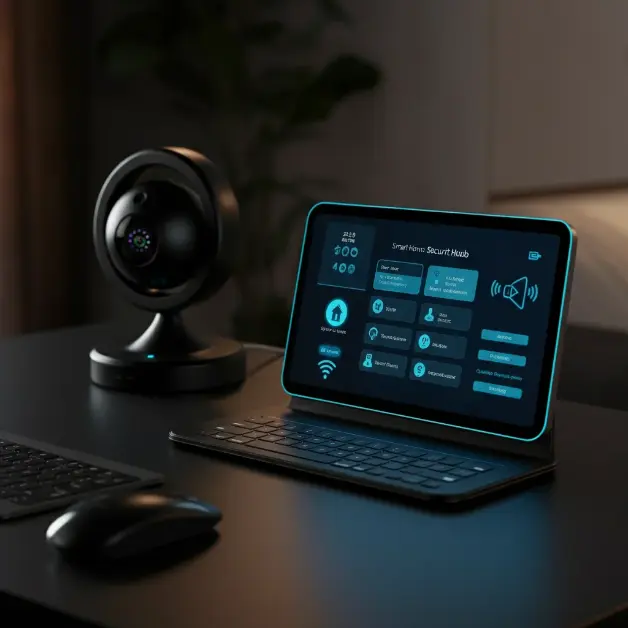
Energy Consumption Monitor
This feature is useful in a smart home security system as it helps monitor and control electricity usage. It connects to other systems so that one can identify which devices consume much power, thus easily reducing energy consumption and utility bills. The monitor will work hand-in-hand with other smart home security systems to provide real-time data on energy use.
Integration
Integration will be what will ensure all your smart home security devices are in unison. This can include cameras, smart locks, and alarms. You can monitor everything in one app through integration. The ease of controlling and managing the entire system is improved by smooth integration and also security and convenience.
Smoke Detection
Smoke detection is a vital feature of any smart home security system. The use of smart smoke sensors ensures you receive alerts right away when smoke is detected, and thus, you will respond promptly to the fire risk. This is one feature that complements your smart home security system to enhance the safety of your home, just like other motion-detecting systems.
Motion Detection
Motion detection in smart home security systems is one of the ways to know about unusual movements around your house. Whenever the system detects movement, it may activate alarms or alert you on your phone for better security. This feature helps in the efficiency of your smart home security system as it monitors your home for any intruder or unexpected events.
Real-time Alerts
it gives you real-time alerts on the security status of your home. The smart home security system will immediately notify you whenever it detects something suspicious, such as an intruder or fire risk. You will have time to take real actions ensuring that your house is always secured and safe.
Complete Control
Complete control is the ultimate feature of any smart home security system. It allows you to manage and monitor all your security devices from one central hub or app. With complete control, you can lock doors, view cameras, and receive alerts, providing total peace of mind and control over your home’s security.
How to Develop Your Own Smart Home Security System?
To develop your own smart home security system, choose hardware, build a prototype, hire IoT developers, and conduct thorough testing.
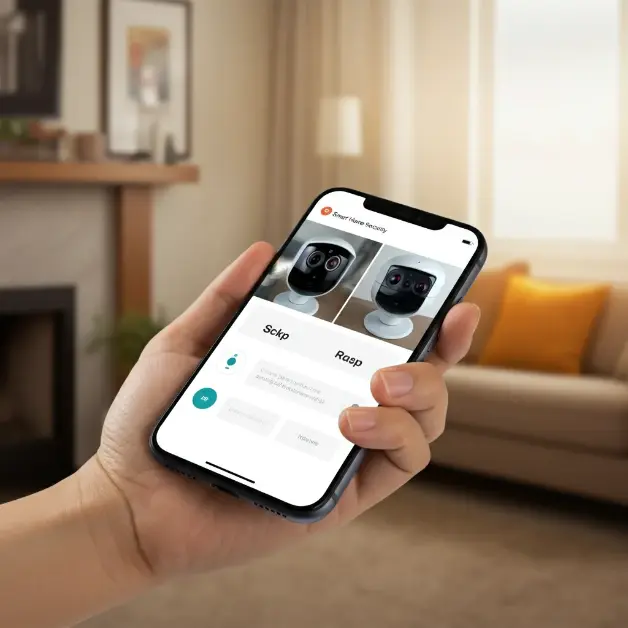
1. Choose Hardware
Building a personal smart home security system begins with the selection of proper hardware. It essentially comprises selecting appropriate smart cameras, sensors, locks, and alarms according to the security requirements. Thus, it demands high-quality components that are compatible enough to ensure the seamless functioning of your smart home security system without any faults and glitches.
2. Build a Prototype
Once the hardware is chosen, you can move ahead with prototype development for the smart home security system. With a prototype, you will be in a position to test the interface of several devices against the general functionality of the planned system. It’s essential to visualize the integration process before investing in a fully functional smart home security system.
3. Hire IoT Developers
Hiring experienced IoT developers is essential when building a custom smart home security system. These developers will help integrate the hardware with software, enabling remote access, real-time alerts, and automation features. Skilled IoT developers ensure your smart home security system is both secure and user-friendly, offering robust performance.
4. Do Extensive Testing
Once you design your smart home security system, then it’s testing time. Testing will find all the weaknesses there might be in the smart security system you just designed. Each part of your security system-from cameras and sensors to locks-must work seamlessly well. You will resolve any problems with your smart home security system before deployment so that your house will be well protected.
Popular Brands in 2025
- Ring: Known for robust outdoor cameras and doorbells.
- Arlo: Provides high-resolution cameras with AI features.
- SimpliSafe: Provides affordable, easy-to-install systems.
- Google Nest: Known for seamless integration with Google devices.
Additional Tips
- Use a strong password to protect your system.
- Keep software updated to stay ahead of any security threats.
- Monitor your system regularly to ensure it’s functioning properly.
FAQs
1. What is a smart home security hub?
A smart home security hub is the brain of your security system, centralizing all of your security devices, and can monitor and control your home from a distance.
2. How Do I Set Up Security at Home?
Set up smart security cameras, doorbell cameras, motion sensors, and smart locks. Allow yourself to view alerts and receive remote access to monitor your home anywhere.
3. What Is Needed in a Smart Home to Connect?
For the connection of smart devices in the house, one needs a good Wi-Fi connection, a smart hub, and supported devices, which may include lights, thermostats, and cameras.
4. Is Smart Home Profitable?
Yes. Smart homes benefit in the long run by bringing about energy efficiency, reducing the utility costs of the house, and increasing the value of the property.
5. How to Start Making Your Home a Smart Home?
Start by using a smart hub such as Amazon Alexa or Google Home. Add smart lights, thermostats, and locks, and begin with small pieces and then build your way forward as you gain confidence in using the technology.
Conclusion
In 2025, it will become easy to configure a fully equipped smart home security system. All the smart devices, including smart cameras, motion sensors, smart locks, and doorbell cameras, can be easily combined to create the most efficient and secure environment within your home. Protecting your property is easy; just get everything connected to your smart hub and monitor your home with your smartphone. Remember, every device has a certain purpose, and when properly integrated, they work together to deliver full protection.
Set up a smart home security system. The most important areas of this system include entry points, surveillance, and emergency alerts. Compatibility and controllability will be the only keys to unlocking the successful deployment of a smart home security system. A smart home security system in 2025 will guarantee your safety and add more convenience and peace of mind to daily life.



